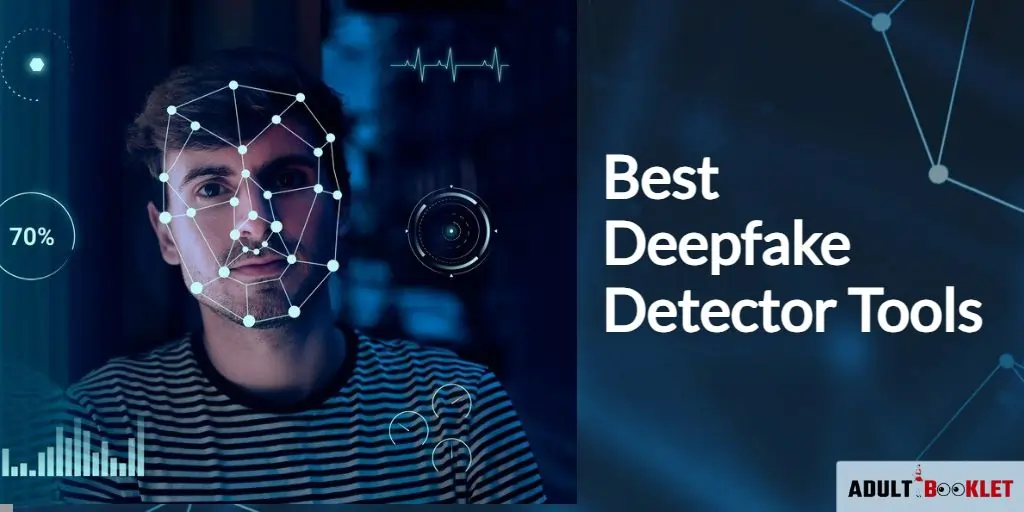
The wild wild world of deepfakes, where seeing isn't always believing!
Digital trickery can make anyone say or do anything on the screen, and to overcome this, we have come up with some of the best in the game deepfake detector tools.
In 2024, deepfake fraud attempts surged by a staggering 3000% compared to the previous year. As we head into 2026, it's crucial to stay vigilant and equip ourselves with the best tools to detect these manipulated videos and images.
71% of global respondents admit that they don't know what a deepfake is.
These AI-generated synthetic media can convincingly mimic real people, making it increasingly difficult to distinguish truth from deception. Detecting deepfakes has become a critical necessity to curb the spread of misinformation, protect individuals and businesses from reputational harm, and safeguard the integrity of digital content.
It’s time to equip ourselves with the knowledge to identify and counter this growing menace with the best tools that can help restore trust in the digital world.
What are Deepfake Detector Tools?
Deepfake detector tools are software applications designed to analyze digital media, such as images, videos, and audio files, to determine whether they have been manipulated or artificially generated using deep learning techniques.
Deepfake detector tools employ advanced algorithms and machine learning models to identify subtle inconsistencies, artifacts, or anomalies that may indicate the presence of a deepfake.
They work by using techniques like image analysis, facial recognition, and machine learning to detect signs of manipulation, such as mismatches in lip-syncing, unnatural eye movements, or inconsistencies in lighting and shadows.
What are Deepfakes and Why Are They Dangerous?
Deepfakes are digitally manipulated videos, images, or audio that use artificial intelligence to convincingly replace one person's likeness with another's. While not all deepfakes are malicious, they can be used to spread misinformation, harass individuals, and undermine trust in the media. Deepfakes can also depict people saying or doing things they never did, potentially ruining reputations.
As technology advances, experts warn that deepfakes could become indistinguishable from genuine media within years. This poses significant risks, as deepfakes could influence elections, accelerate the decline of trust in traditional media, and even spark international conflicts.
96% of deepfakes are pornographic, often targeting female celebrities without consent.
Spotting Deepfakes: Top Tips to Avoid Being Deceived
Deepfakes are becoming increasingly sophisticated, making it harder to distinguish real content from manipulated media. However, there are still some telltale signs to look out for :
| Telltale Signs of Deepfakes | Detection Methods |
|---|---|
| Unnatural facial expressions | Analyzing video metadata |
| Inconsistent lighting and shadows | Conducting reverse image searches |
| Mismatched lip-syncing | Using AI-powered detection tools |
| Irregular blinking patterns | Adopting a “verify before trusting” mentality |
Fact-checking suspicious content through reliable sources and using deepfake detection tools can help you avoid falling victim to deception. Remember, if something seems too good (or shocking) to be true, it probably is.
Best Deepfake Detection Tools to Safeguard You
| Tool Name | Developer | Detection Method | Accuracy | Availability |
|---|---|---|---|---|
| Microsoft Video Authenticator | Microsoft | AI-based analysis of visual elements | NA | Limited availability through partnerships |
| Sentinel | Sentinel AI | Advanced AI algorithms, facial landmark analysis, temporal consistency checks | High (specific % not available) | Commercial product |
| Intel's Real-Time Deepfake Detector (FakeCatcher) | Intel | Photoplethysmography (PPG) signals analysis | 96% accuracy claimed | Not widely available, demonstration stage |
| WeVerify | EU-funded project | Various AI and machine learning techniques | NA | Open-source, available for researchers and journalists |
| Deepfake-o-Meter | University at Buffalo | Ensemble of various detection methods | Varies by algorithm | Open-source, available online |
| Deepfake Proof | NA | NA | NA | Free online tool |
| Sensity | Sensity AI | AI and deep learning technology | High (specific % not available) | Commercial product |
1. Microsoft Video Authenticator
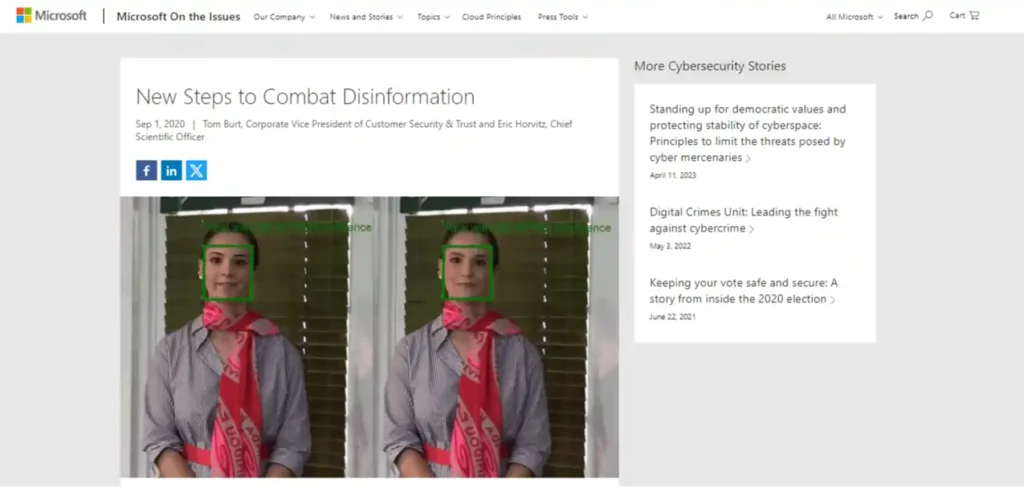
Microsoft's Video Authenticator is a powerful tool that can analyze still photos or videos to provide a confidence score indicating the likelihood of manipulation. It works by detecting the blending boundary of the deepfake and subtle grayscale elements that are often undetectable to the human eye.
The Video Authenticator tool looks for subtle changes in the grayscale elements of the media, which are often a telltale sign of a deepfake. The tool provides a real-time confidence score, allowing users to quickly determine if the media is authentic or not.
Microsoft Video Authenticator Key Features
2. Sentinel
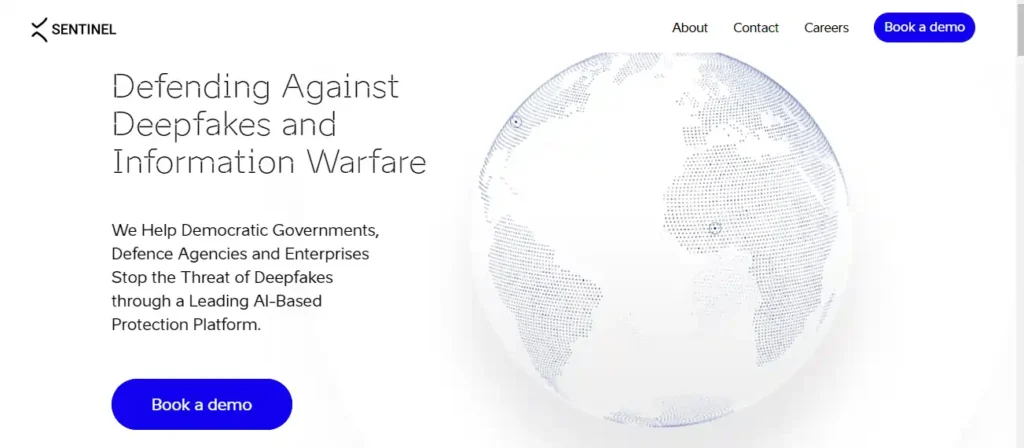
Sentinel is a leading AI-based protection platform that helps democratic governments, defense agencies, and enterprises stop the threat of deepfakes. Sentinel's technology is used by leading organizations in Europe.
The system works by allowing users to upload digital media through their website or API, which is then automatically analyzed for AI forgery. The system determines if the media is a deepfake or not and provides a visualization of the manipulation.
Sentinel Key Features
3. Intel's Real-Time Deepfake Detector (FakeCatcher)
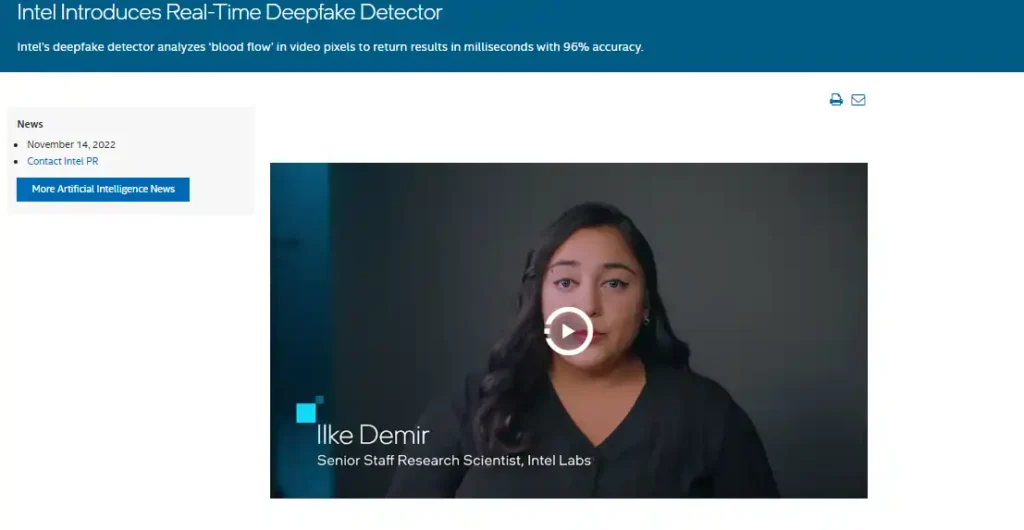
Intel's FakeCatcher technology is a real-time deepfake detector that focuses on speed and efficiency. It uses Intel hardware and software, running on a server and interfacing through a web-based platform.
FakeCatcher looks for authentic clues in natural videos by analyzing subtle “blood flow” in the pixels of a video to detect deepfakes. Through deep learning, this AI deepfake detector software can instantly detect whether a video is real or fake with a 96% accuracy rate.
Intel’s Real-Time Deepfake Detector Key Features
4. WeVerify
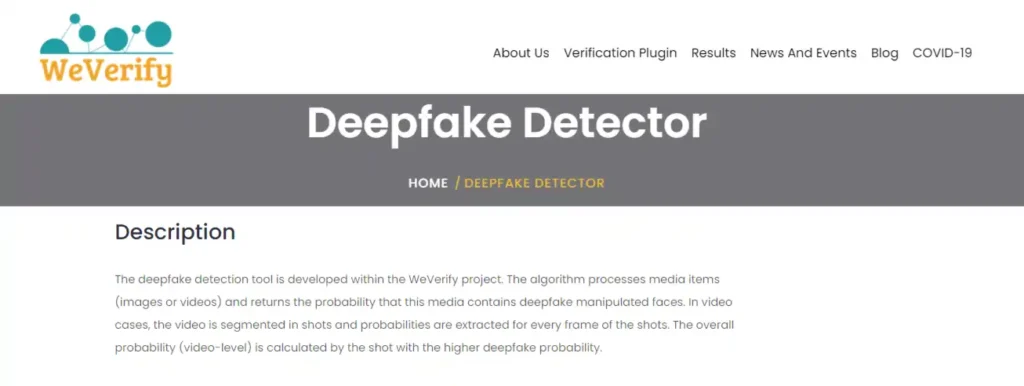
WeVerify is a deepfake detection tool focused on verifying media authenticity. It offers multiple detection methods, performance details, and reference guides to help users identify manipulated content.
WeVerify's key features include analyzing facial expressions, blinking patterns, and lip-syncing inconsistencies to detect deepfakes. The tool also provides detailed reports and visualizations to help users understand the analysis process.
WeVerify Key Features
5. Deepfake-o-Meter
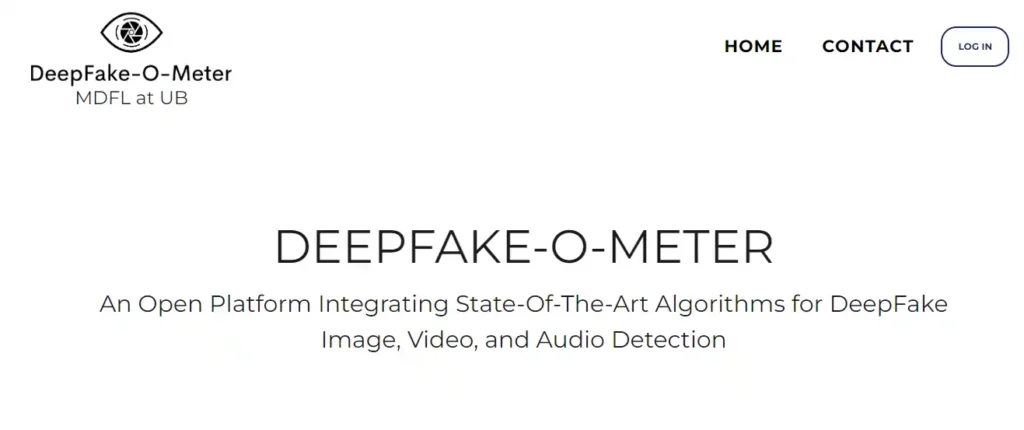
Deepfake-o-Meter is a tool that rates the likelihood of a video being a deepfake. It analyzes various aspects of the video, such as facial movements, lip-syncing, and blinking patterns, to detect potential manipulation.
The tool provides a score or rating that indicates the probability of the video being a deepfake. This can be particularly useful for quickly assessing the authenticity of a video without getting into the technical details.
Deepfake-o-Meter Key Features
6. Deepfake Proof
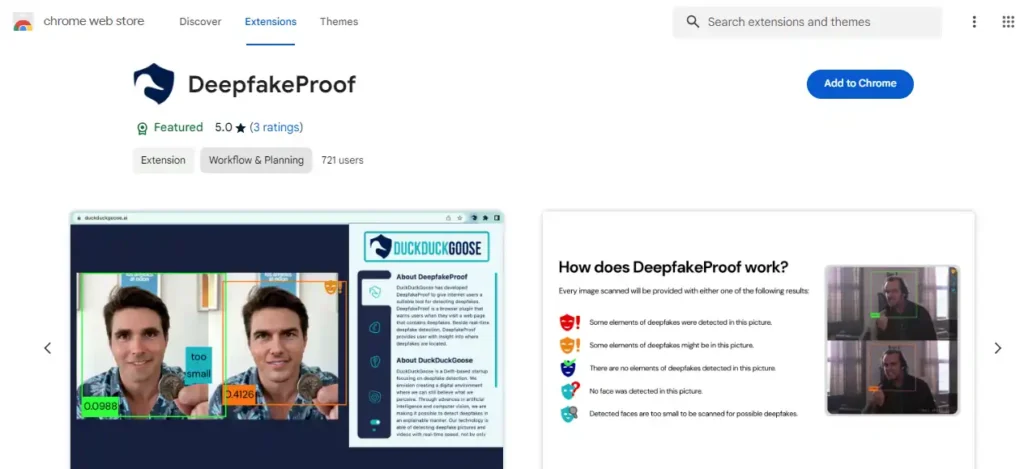
DeepfakeProof is a tool that aims to prove the authenticity of media by using blockchain-based verification and tamper-proof certification. It offers a unique approach to deepfake detection by focusing on proving the genuineness of content rather than identifying manipulations.
DeepfakeProof's blockchain-based system ensures that any tampering or manipulation of the certified media can be detected, providing users with a high level of confidence in the authenticity of the content.
DeepfakeProof Key Features
7. Sensity
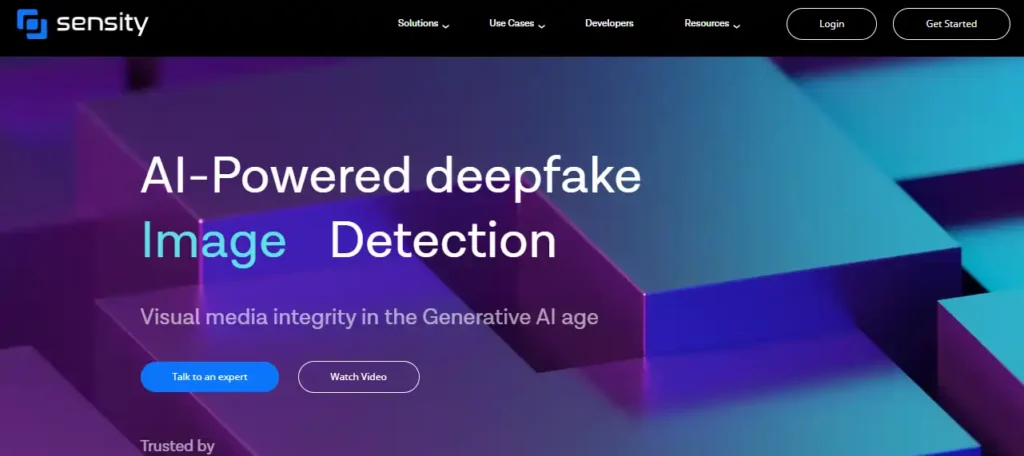
Sensity is a deepfake detection tool focused on identifying manipulated visuals. It uses proprietary API (Application Programming Interface) to analyze images, videos, and synthetic identities for signs of AI forgery.
Sensity's approach involves analyzing visual inconsistencies, anomalies, and artifacts to detect deepfake manipulation. The tool is designed to help users verify the authenticity of digital media and combat the spread of misinformation.
Sensity Key Features
Bright Side of Synthetic Media: Uses of Deepfake Technology
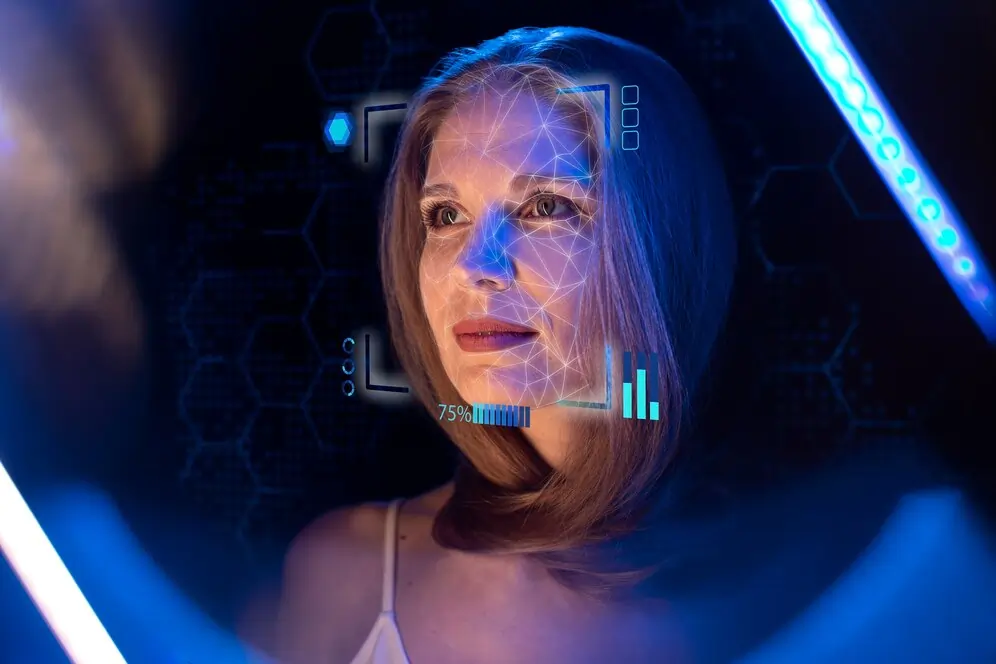
Despite its controversial reputation, deepfake technology offers numerous benefits across industries. Starting off from entertainment to education to e-commerce, the industries where it is pretty much large in number. Let's have a look at them!
Some Positive Uses of Deepfake Technology are:
| Industry | Potential Uses and Benefits |
|---|---|
| Entertainment | Realistic film dubbing, special effects, personalized experiences |
| Education | Interactive lessons with historical figures, engaging learning experiences |
| Art | Recreation of famous paintings, interactive exhibits with deceased artists |
| Accessibility | Personalized voice-overs, sign language interpretations |
| E-commerce | Virtual try-on experiences, personalized product recommendations |
| Communication | Anonymous reporting for journalists and activists, protecting privacy |
| Healthcare | Synthetic data generation for medical research, personalized patient communication |
Common Questions Related to Deepfake Detectors
What Industries Are Most Vulnerable to Deepfake Attacks?
Industries like finance, insurance, politics, and entertainment are particularly susceptible to deepfake-related risks and threats.
How does Deepfakes Pose a Threat to Biometric Authentication Systems?
Deepfakes can bypass facial recognition and voice-based authentication systems, compromising the security of user data and applications.
What Role Does Blockchain Play in Combating Deepfakes?
Blockchain technology can create tamper-proof digital signatures and watermarks, ensuring the authenticity and provenance of digital media.
What are the Potential Social Implications of Deepfake Technology?
Deepfakes can be used to spread misinformation, manipulate public opinion, and erode trust in online content, leading to significant social consequences.
How Can Individuals Spot Deepfake Audio?
Irregular breathing, unnatural pauses, inconsistent room acoustics, and robotic-sounding voices are indicators of deepfake audio.
What Role Does Media Literacy Play in Combating Deepfakes?
Promoting media literacy and critical thinking skills can help individuals identify and resist the influence of deepfakes and manipulated content.
How are Governments and Organizations Collaborating to Address the Deepfake Threat?
Governments and organizations are working together to develop detection tools, establish regulations, and raise awareness about the risks of deepfakes.
Separating Fact from Fiction
As we wrap up our article on the best deepfake detector tools, it's clear that the battle against digital deception is in full swing. These technologies are our digital sentinels, working tirelessly to distinguish fact from fiction in an increasingly complex online world.
While no tool is perfect, AI and machine learning are giving us hope in the fight against misinformation. However, the technology is just part of the solution. Our own critical thinking and media literacy skills remain crucial.
We'd love to hear your thoughts and experiences with deepfake detection tools. Have you used any of the tools mentioned in this article? What features do you find most valuable, and what improvements would you like to see in the future?









